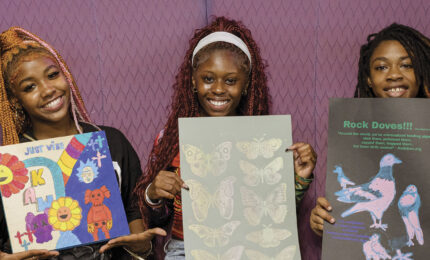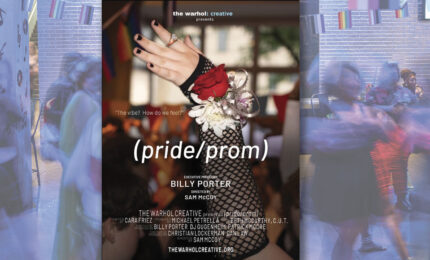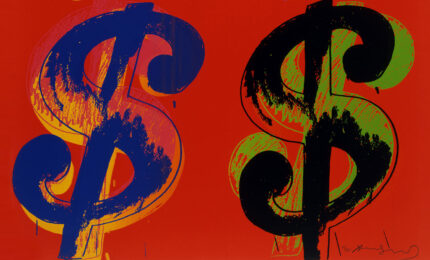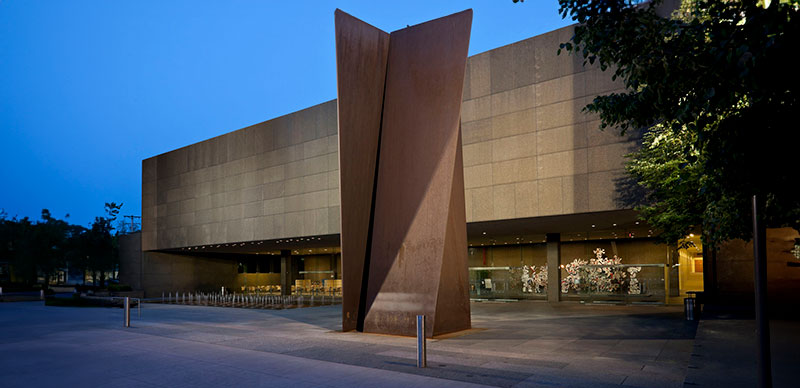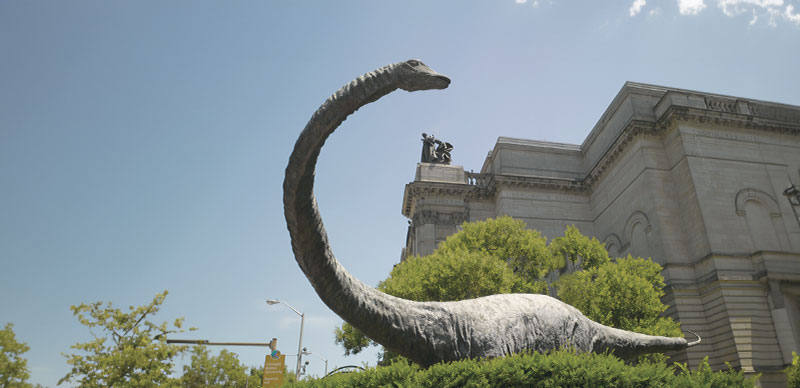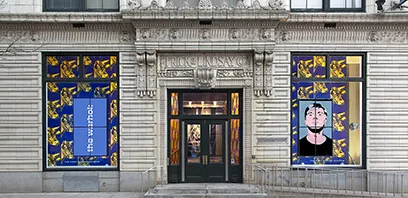
Mrs. Kennedy stared at the ground. Her pink Chanel suit was stained with the blood of her husband, President John F. Kennedy, who’d been assassinated hours earlier. Silently, she stood aboard Air Force One and watched as Lyndon B. Johnson placed his left hand on her husband’s Catholic prayer book. He raised his right hand in the air and took the oath of office. The inauguration was over in half a minute.
To open a newspaper and see Jackie Kennedy in that fragile state was shocking to Americans who were drawn to her elegance and charisma. Andy Warhol was among those struck by the images.
“Warhol likely saw this icon of glamour and was drawn to her stoicism and sadness,” says Heather White, director of learning at The Warhol. “Kennedy was the youngest president we’ve ever had, and his wife was introducing new styles and fashions. … Everyone was obsessed.”
A year later, Warhol released his portrait series, Jackie, with more than 300 screenprints created from magazine and newspaper coverage of that fateful day in Dallas. Guests can view Warhol’s isolation of Jackie’s grief in the six prints currently on display at The Andy Warhol Museum. The image shown here is the only one of these prints that doesn’t reveal her entire face. Instead, she looks down at the ground, her hair shielding her from the camera.
“People were impressed with the way she carried herself, which was focused on by the media,” says White. “The White House began to be referred to as ‘Camelot’— the Kennedys were almost royalty.” In the selected print, however, Warhol grants Jackie a moment of refuge. Here, she is not an untouchable fashion icon or on the front page of any newspaper; she is allowed to be vulnerable.
Within each print, Warhol inked the widow in blue, gold, or white. White explains that these colors are similar to the palette of St. John Chrysostom Byzantine Catholic Church—the church that Warhol was raised in—likening Jackie to a saint. Even decades after Jackie was unveiled, Warhol remained captivated by her radiance. In his Exposures publication from 1980, he wrote, “As we walked through the galleries every person recognized Jackie. They didn’t come too close. They stopped for a minute, looked, and whispered. You could hear her name in the air: ‘Jackie. Jackie.’ … Being with her is like walking with a saint.”
